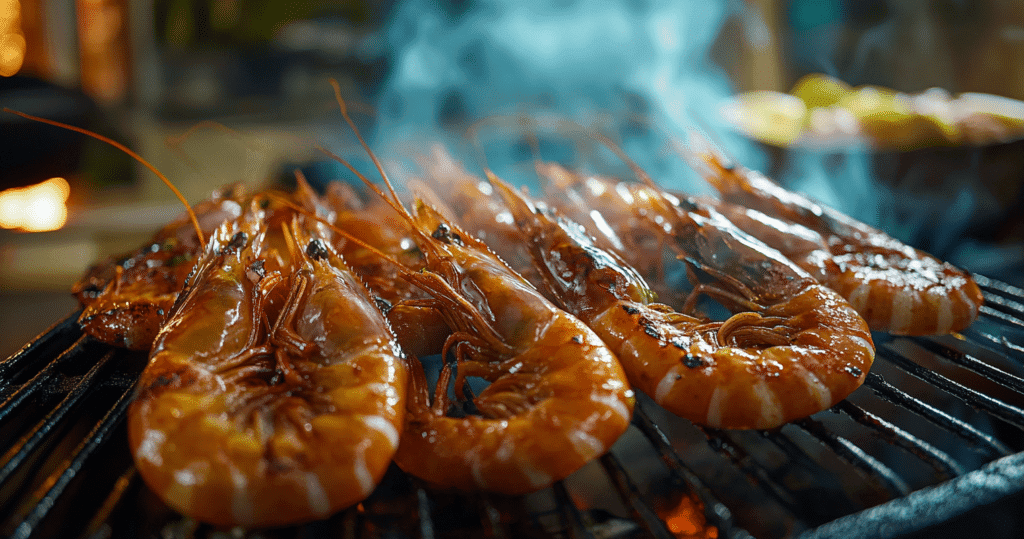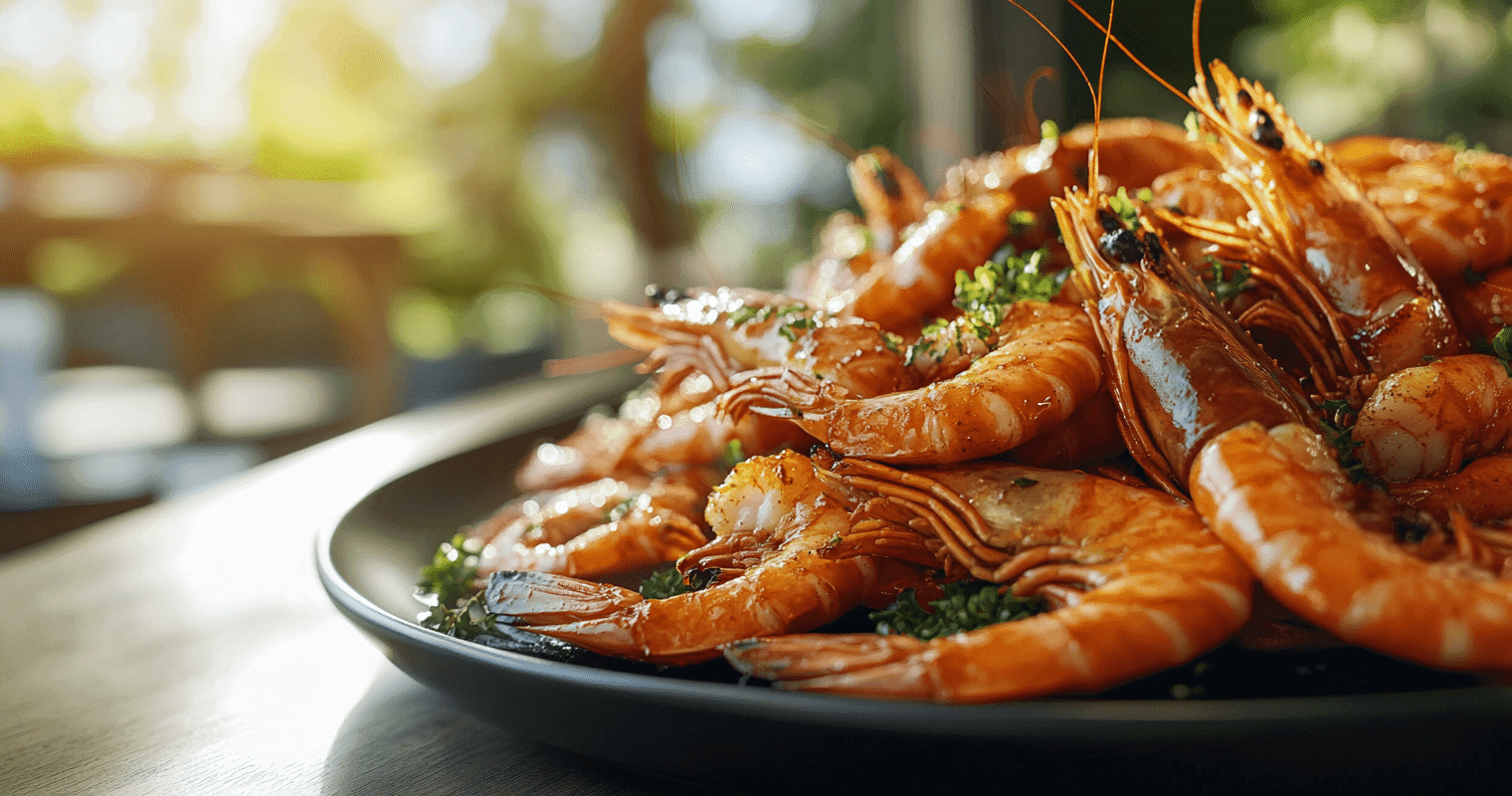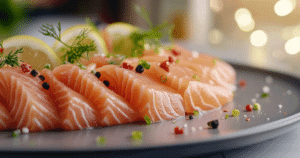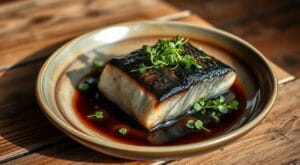Jump to:
Estimated reading time: 11 minutes
Table of contents
Introduction
Grilling shrimp is a popular and tasty way to enjoy this versatile seafood, but one question often arises: Should you keep the shell on or take it off before cooking? This decision can significantly impact the flavor, texture, and overall grilling experience. Whether you’re a seasoned grill master or just starting out, understanding the pros and cons of leaving the carapace on versus removing it is essential for achieving the best results.
In this guide, we’ll explore the benefits and drawbacks of each method, the best techniques for both approaches, and tips for ensuring your shrimp is perfectly cooked. By the end of this article, you’ll know whether to grill shrimp with or without the shell, depending on your preferences and the desired outcome.
Why the Shell Matters in Grilling Shrimp
Before diving into the details, it’s important to understand why the shell plays a significant role during cooking. The outer layer of shrimp serves as a natural barrier, affecting both texture and flavor.
The Role of the carapace in Flavor Retention
When shrimp is cooked with the shell intact, it helps lock in moisture and flavor, preventing the seafood from drying out. The shell acts as a barrier, allowing the shrimp to cook gently while absorbing the smoky essence from the grill. This can result in more succulent and flavorful shrimp compared to those grilled without the shell. For a detailed recipe that maximizes shrimp flavor, refer to Easy Barbecue Shrimp Recipe.
The Impact of the Shell on Texture
The texture of shrimp is also influenced by whether you leave the shell on while grilling. Cooking shrimp with the shell intact tends to result in juicier and more tender meat, as the carapace helps retain the natural juices. On the other hand, grilling without the shell can lead to a firmer texture and may produce a slightly crispier exterior, depending on the cooking method.
Considerations for Ease of Eating
Another key factor is ease of eating. Shrimp grilled with the shell on requires peeling before consumption, which can be messy and time-consuming. However, some people enjoy the tactile experience and the additional flavor the shell imparts. Shrimp cooked without the carapaceell is easier to eat since it’s ready right off the grill. For more insights on grilling techniques, you might find the discussion in Best Barbecue Shrimp Way useful.
Shell On or Off: The Pros and Cons
To help you decide, let’s examine the advantages and disadvantages of each approach. Understanding these factors will allow you to make an informed choice based on your preferences and the specific dish you’re preparing.
Grilling Shrimp With the Shell
Cooking shrimp with the carapace offers several benefits but also presents some challenges. Here’s what you need to know.
Pros of Grilling With the Shell
- Flavor Retention: One of the biggest advantages is that the shell helps lock in moisture and flavor, preventing the shrimp from drying out and allowing it to absorb smoky notes from the grill. This can result in more succulent and flavorful shrimp.
- Juicy Texture: The carapacehelps to retain natural juices, resulting in a tender and juicy texture. This is especially beneficial when grilling over high heat, as the shell can protect the shrimp from becoming overcooked.
- Enhanced Grilling Experience: Some find that cooking shrimp with the shell enhances the overall experience. The shell can char slightly, adding a smoky flavor to the shrimp. Additionally, peeling shrimp after grilling can be a fun, interactive experience for diners.
Cons of Grilling With the Shell
- Messy and Time-Consuming: The main drawback is that it can be messy and time-consuming to peel shrimp before eating. This can be particularly inconvenient when serving a large group or when you want to enjoy a quick meal.
- Less Marinade Penetration: When grilling shrimp with the shell on, the marinade may not penetrate as effectively, resulting in a milder flavor. The shell can act as a barrier, preventing the marinade from fully infusing into the flesh.
- Uneven Cooking: If the shell is not properly slit or the shrimp is not turned frequently on the grill, it may result in uneven cooking. The shrimp can sometimes cook faster on the outside than on the inside, leading to a less consistent texture.
Grilling Shrimp Without the Shell
Grilling shrimp without the carapacehas its own set of advantages and disadvantages. Here’s what you need to consider.
Pros of Grilling Without the Shell
- Ease of Eating: The most significant advantage is that shrimp is easier to eat when the shell is removed. It’s ready to enjoy right off the grill, making it convenient for serving at parties, cookouts, or casual meals.
- Better Marinade Absorption: Without the carapace, the shrimp can absorb marinades more effectively, resulting in a more flavorful dish. The flesh is directly exposed to the marinade, allowing it to infuse fully with the desired flavors.
- Crispy Exterior: Cooking shrimp without the carapace allows it to develop a slightly crispy exterior, particularly if grilled over high heat. This can add a delightful contrast to the tender interior.
Cons of Grilling Without the Shell
- Potential for Dryness: A significant drawback is the risk of dryness. Without the protective shell, shrimp can lose moisture quickly, especially when grilled over high heat. This can result in a tougher texture if overcooked.
- Less Juicy Texture: Shrimp grilled without the shell may not be as juicy as those cooked with the carapace. The lack of a protective barrier means that natural juices can evaporate more easily during cooking.
- Risk of Overcooking: Because shrimp cooks quickly, grilling without the shell requires careful attention to avoid overcooking. Without the carapace, shrimp can go from perfectly cooked to overdone in a matter of seconds. For expert tips on grilling shrimp, consider How to Grill the Best Barbecued Shrimp – The Spruce Eats.
How to Grill Shrimp With or Without the Shell
Now that we’ve explored the pros and cons, let’s dive into the best techniques for grilling shrimp using both methods. By following these steps, you can ensure that your shrimp is perfectly cooked, whether you choose to leave the shell on or remove it.
How to Grill Shrimp With the Shell
Grilling shrimp with the carapace requires a slightly different approach than grilling without it. Here’s a step-by-step guide to grilling shrimp with the shell on.
Step 1: Prepare the Shrimp
Start by selecting fresh, high-quality shrimp with the shell on. Rinse under cold water and pat dry with paper towels. If desired, you can remove the legs for a cleaner appearance, but this is optional. Make a shallow slit along the back to remove the vein, but leave the shell intact.
Step 2: Marinate the Shrimp
Enhance the flavor by marinating for 15-30 minutes. Keep in mind that the shell will prevent some of the marinade from penetrating the flesh, so you may want to use a bolder marinade or baste the shrimp with additional marinade during grilling.
Step 3: Preheat the Grill
Preheat your grill to medium-high heat. If using a charcoal grill, allow the coals to burn until they are covered with white ash. For a gas grill, preheat for 10-15 minutes before grilling. Lightly oil the grill grates to prevent the shrimp from sticking.
Step 4: Grill the Shrimp
Place the shrimp directly on the grill grates. Grill for 2-3 minutes on each side, or until the shell is lightly charred and the shrimp is opaque. Be sure to turn frequently to ensure even cooking. If the shrimp is not cooking evenly, move it to a cooler part of the grill or cover it with a lid to create an oven-like effect.
Step 5: Serve and Enjoy
Once cooked, remove from the grill and transfer to a serving platter. Allow the shrimp to rest for a few minutes before serving. The shell may be hot, so encourage diners to peel carefully. Serve with lemon wedges and your favorite dipping sauce for a delicious, hands-on meal.
How to Grill Shrimp Without the Shell
Grilling shrimp without the shell is a quicker and more straightforward process, but it requires careful attention to avoid overcooking. Here’s how to grill shrimp without the shell.
Step 1: Prepare the Shrimp
Select fresh, large shrimp and remove the shell, leaving the tail intact if desired. Devein by making a shallow slit along the back and removing the vein. Rinse under cold water and pat dry with paper towels.
Step 2: Marinate the Shrimp
Marinate for 15-20 minutes. Since the shrimp is shell-less, the marinade will penetrate the flesh more effectively, so a shorter marinating time is sufficient. For a more intense flavor, marinate for up to an hour.
Step 3: Preheat the Grill
Preheat your grill to medium-high heat. If using a grill pan on the stove, heat over medium-high heat. Lightly oil the grill grates or the grill pan to prevent the shrimp from sticking.
Step 4: Grill the Shrimp
Place the shrimp directly on the grill grates or in the grill pan. Grill for 1-2 minutes on each side, or until they are opaque and slightly charred. Because the shrimp is shell-less, it will cook quickly, so keep a close eye on it to avoid overcooking. Turn frequently to ensure even cooking. For an expert method on grilling shrimp without the shell, check out Perfect Grilled Shrimp (Easy Method!) – A Couple Cooks.
Step 5: Serve and Enjoy
Once cooked, remove from the grill and transfer to a serving platter. Serve immediately with your favorite side dishes and dipping sauces. The shrimp is ready to enjoy right off the grill, making it a convenient and delicious option for any meal.
Tips for Perfectly Grilled Shrimp: Shell On or Off
Whether you choose to grill shrimp with or without the shell, these tips will help you achieve perfectly cooked seafood every time.
Use High-Quality Shrimp
The quality of the shrimp you use will significantly impact the final dish. Choose fresh, large shrimp for grilling, as they are less likely to overcook and will provide a better texture. If fresh shrimp is not available, opt for high-quality frozen shrimp and thaw them properly before grilling.
Don’t Overcook the Shrimp
Shrimp cooks quickly, so it’s essential to keep a close eye on it while grilling. Overcooked shrimp can become tough and rubbery, regardless of whether you grill with the shell on or off. The shrimp is done when it turns opaque and curls slightly, usually after just 2-3 minutes per side.
Experiment With Marinades and Seasonings
One of the best parts of grilling shrimp is the opportunity to experiment with different marinades and seasonings. Whether you prefer a spicy, tangy, or sweet flavor profile, there’s a marinade to suit your taste. Just be mindful of the marinating time, especially when grilling without the shell, as the flavors will penetrate more quickly.
Consider the Cooking Method
The method you choose for grilling shrimp can also affect the final outcome. Grilling over direct heat is the most common method, but you can also use indirect heat or a grill pan to achieve different textures and flavors. For shrimp grilled with or without the shell, direct heat will give you a nice char and smoky flavor, while indirect heat allows for more even cooking. For a detailed guide on different cooking methods, see Should You Grill Shrimp With Shell On Or Off? – The Cooking Facts.

Frequently Asked Questions About Grilling Shrimp
Which Is Better for Grilling, Shell On or Off?
The choice of whether to grill shrimp with or without the shell depends on your preferences and the specific dish you’re preparing. Grilling with the shell can result in juicier, more flavorful shrimp, while grilling without the shell allows for better marinade absorption and ease of eating. Both methods have their advantages, so it ultimately comes down to personal preference.
How Do You Prevent Shrimp From Sticking to the Grill?
To prevent shrimp from sticking to the grill, make sure the grill grates or grill pan are well-oiled before cooking. You can also brush the shrimp with oil before placing them on the grill. Preheating the grill to the correct temperature will also help to prevent sticking.
Can You Grill Frozen Shrimp Without Thawing?
While it’s possible to grill frozen shrimp without thawing, it’s not recommended. Grilling frozen shrimp can result in uneven cooking, with the exterior overcooked and the interior undercooked. For the best results, thaw the shrimp completely before grilling, whether you choose to grill them with or without the shell.
How Long Should You Marinate Shrimp Before Grilling?
The marinating time for shrimp depends on whether you’re grilling them with or without the shell. For shrimp with the shell on, marinate for 15-30 minutes to allow the flavors to penetrate. For shrimp without the shell, a shorter marinating time of 15-20 minutes is sufficient, as the marinade will infuse more quickly.
Conclusion
Deciding whether to barbecue shrimp with the shell or without it is a matter of personal preference and depends on the desired outcome. Both methods have their distinct advantages, and understanding these can help you make the best choice for your grilling needs. Grilling shrimp with the shell can result in juicier, more flavorful shrimp, while grilling without the shell allows for better marinade absorption and ease of eating.
By following the tips and techniques outlined in this guide, you can master the art of grilling shrimp with or without the shell and enjoy perfectly cooked shrimp every time. Whether you’re hosting a backyard barbecue, preparing a quick weeknight dinner, or cooking for a special occasion, you’ll be equipped to make the right choice and impress your guests with delicious, smoky, and tender shrimp.






